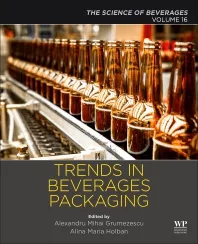Pet Resin Manufacturing: Improvements Create Efficiencies
![]()
Pet Resin Manufacturing: Improvements Create Efficiencies
A new process that
has the potential to significantly reduce the cost of polyethylene
terephthalate (PET) is being put into place by resin supplier Eastman
Chemical Co.
The new PET process, called IntegRex, is being
installed at Eastman’s resin plant in South Carolina. Construction
will start early next year, and the plant will go online with the new
process in 2006, says Peter Esbach, spokesperson for Eastman.
“IntegRex is a major innovation in
paraxylene-to-PET production technology,” Eastman Chairman and Chief
Executive Officer Brian Ferguson said in a statement. “Building on
our established strength in chemical process innovation and our recognized
excellence in polyester technology, Eastman has developed a technology that
we believe will set us apart as the leader in the manufacture of PET
resin.”
Paraxylene is a particular isomer (atomic arrangement)
of xylene, a hydrocarbon produced from naphtha. In the PET production
process, paraxylene becomes terephthalic acid, which is then reacted with
ethylene glycol to become PET.
Eastman declined to specify what the process
improvements consist of. The company expects to receive more than 100
patents on the new process, which will form the basis of a
350,000-metric-ton integrated PET manufacturing facility at the Columbia
site. The $100 million investment will comprise a new manufacturing
facility and supporting infrastructure and intermediate raw material
conversion retrofits at the Voridian Columbia plant near Columbia, S.C.
PET, the highest-volume packaging resin in North
America, has been subject to price pressures because of increases in the
price of natural gas, which is used to make most of the naphtha that
becomes paraxylene. The purpose of IntegRex is to increase the efficiency
of the paraxylene-to-PET process, bringing down the price. However, Esbach
says it’s too soon to estimate just how much the savings will be,
noting that the PET market is subject to many variables.
“You’re talking about the end of ’06
to ’07, and I don’t think anyone wants to get into a discussion
of what prices will be three years out,” he says.
For the immediate future,
Eastman plans to concentrate on installing IntegRex at the Columbia plant,
Esbach says. The company has not made any decisions at this time about
licensing the technology, nor about instituting it at other Eastman
facilities.
“But if global or regional demand for PET was
such that we have to build another plant, we wouldn’t use the old
technology,” Esbach says.
It’s not possible to take a conventional PET
plant and convert it to IntegRex, but it is possible to use aspects of
IntegRex to make existing PET plants more efficient, Esbach says.
Eastman cited estimates from industry experts that
rising demand for PET—for bottled water, niche soft drinks and other
uses—will require additional capacity in North America by 2006. BI
Looking for a reprint of this article?
From high-res PDFs to custom plaques, order your copy today!





